
From Byte to Triller, we compare the top five contenders trying to become the next TikTok
- A slew of short video apps want to be the next TikTok as the Chinese app faces an uncertain fate in the US
- Powerful recommendations and editing tools on TikTok are proving harder to replicate than the sea of short videos
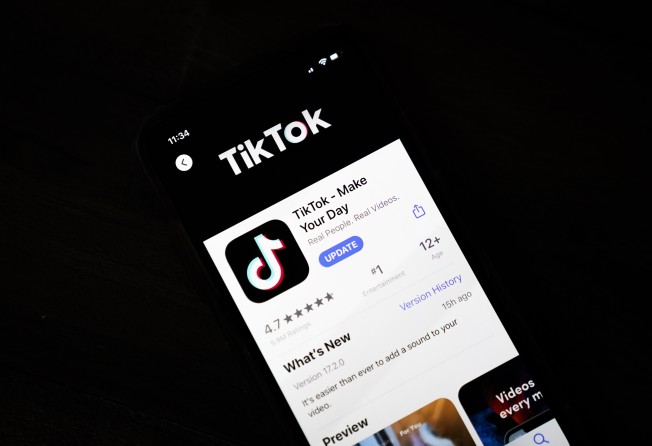
TikTok’s fate in the US is still up in the air following an executive order from President Donald Trump banning transactions related to the app. That’s why many contenders from tech giants and start-ups alike have been racing to grab the attention of the world’s short video lovers.
One of the most notable contenders is Reels, a new feature that lives inside Facebook-owned Instagram. But that one isn’t available worldwide yet: we tried using it in Hong Kong, but nothing would get it to work. Maybe that’s for the best: a New York Times report says Reels is confusing, difficult to navigate and doesn’t offer the many engaging tools you’ll find on TikTok.
But other TikTok competitors have their very own apps. Let’s take a look at the top five.
Triller
If music really matters to you, this might be the app for you.
Triller was started by a Los Angeles-based company by the same name in 2015. But it was only on the first of this month that it became the top free download on Apple’s iOS App Store in the US.
Like TikTok, Triller offers an endless feed of vertical short video clips. Triller has an even bigger focus on music, though.
Before you even start making your video, the app asks you to select the music you want. Then you cut out the 16 seconds of the song that you want and start putting in video clips. The app lets you record new clips or upload ones you already have on your phone – or you can mix both.

Once everything is uploaded, Triller arranges the video clips to match the beat of the music. If you don’t like the results, you can rearrange the clips yourself.
The app also lets you make videos longer than 16 seconds under the “social video” feature, but you won’t be able to set music to them.
Unfortunately, if you’re moving over from TikTok, you’ll notice Triller doesn’t have as many dizzying effects and stickers. But the app still makes it easy to put together an entertaining music video.
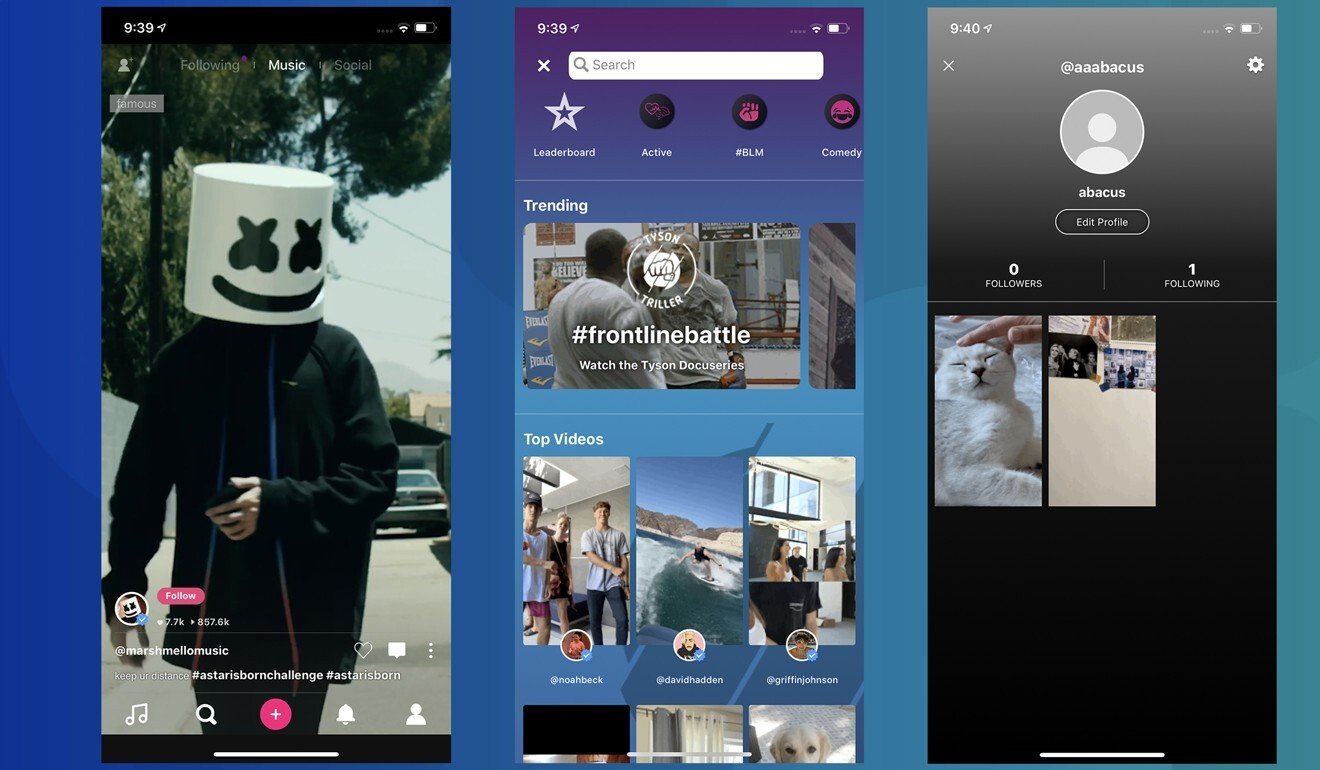
Triller now has 250 million downloads worldwide, according to a company press release. It’s been one of the main beneficiaries of TikTok’s troubles in the US and a recent ban in India.
Triller has also sought other ways to entice new users. It already features celebrities like rapper Snoop Dogg and boxer Mike Tyson. For younger users who aren’t familiar with 90s celebrities, the company has also hired teenage TikTok star Josh Richards as chief strategy officer.
Byte
This app is for those of you who prefer simplicity.
While its numbers aren’t as big as Triller’s, Byte is another notable TikTok competitor mostly because founder Dom Hofmann also co-founded Vine, Twitter’s once-hot short video service.
Byte is also a more simple app. It doesn’t automatically match video clips to music beats, and it doesn’t offer any special effects or filters except for one: Ghost Mode. This lets you superimpose a faded image of your last recorded frame over a new recording. You can also add music, text and GIFs to videos as long as 16 seconds.
Byte doesn’t organise videos with hashtags, a more popular option for apps like TikTok. Instead, it has 50 channels to browse under the discovery tab. This section is where you’ll most notice Byte’s quirky character thanks to its many colourful illustrations.
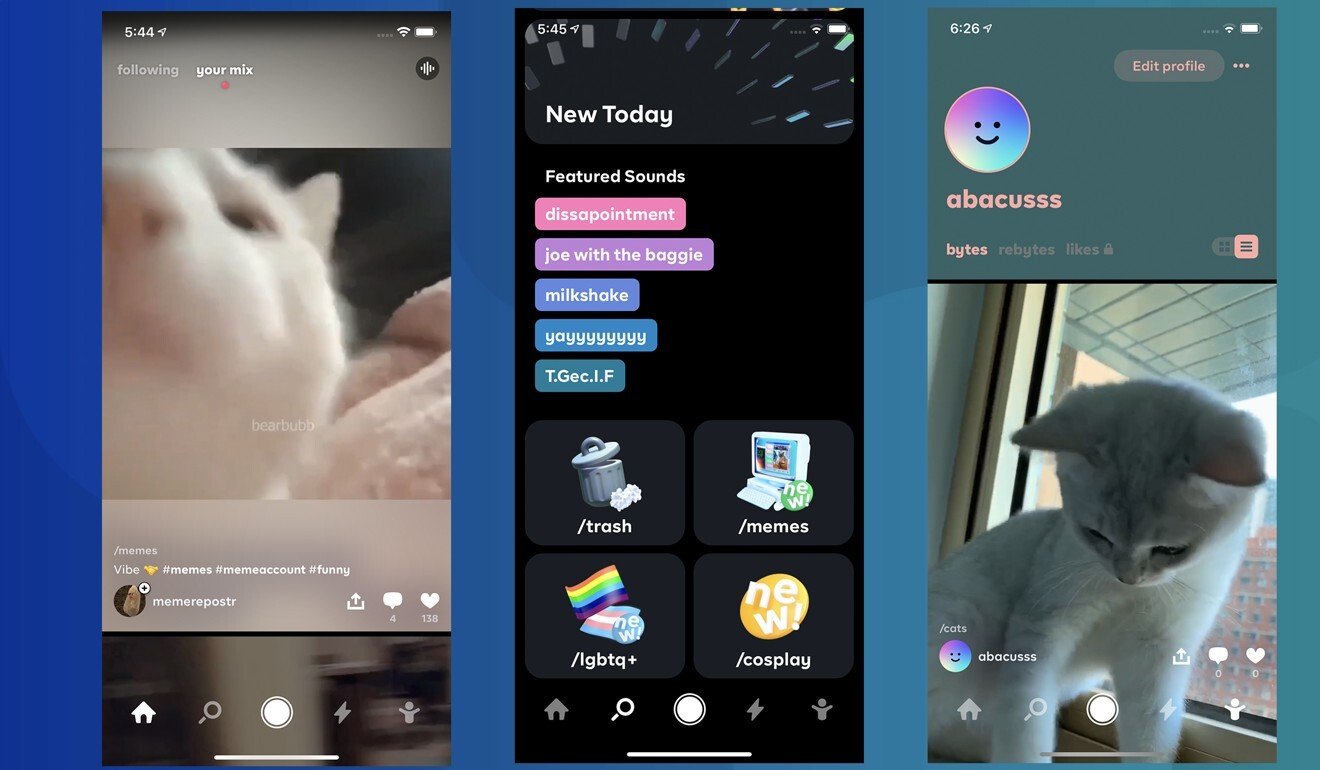
Byte also saw a surge in downloads this month. It jumped to the second spot in free iOS apps in the US, behind only Triller.
Likee
If you love filters and visual effects, this app has plenty of those.
Likee doesn’t have big celebrities like Triller or a star founder like Byte, but it’s quickly become a top TikTok alternative. In the last six months, it racked up more than 7 million downloads, and it reportedly has 150 million monthly active users worldwide as of June.
The app comes from Singapore-based BIGO, which is now owned by Chinese company JOYY. Given its relatively small footprint compared to TikTok, though, the Chinese ownership hasn’t invited the kind of scrutiny ByteDance’s hit app is getting lately.
Unlike it’s competitors, Likee shuns the endless scroll of vertical videos. Instead, users are presented with a collage of thumbnails that’s more reminiscent of China’s Kuaishou. Once you tap an image, though, the TikTok similarities will be much more apparent.
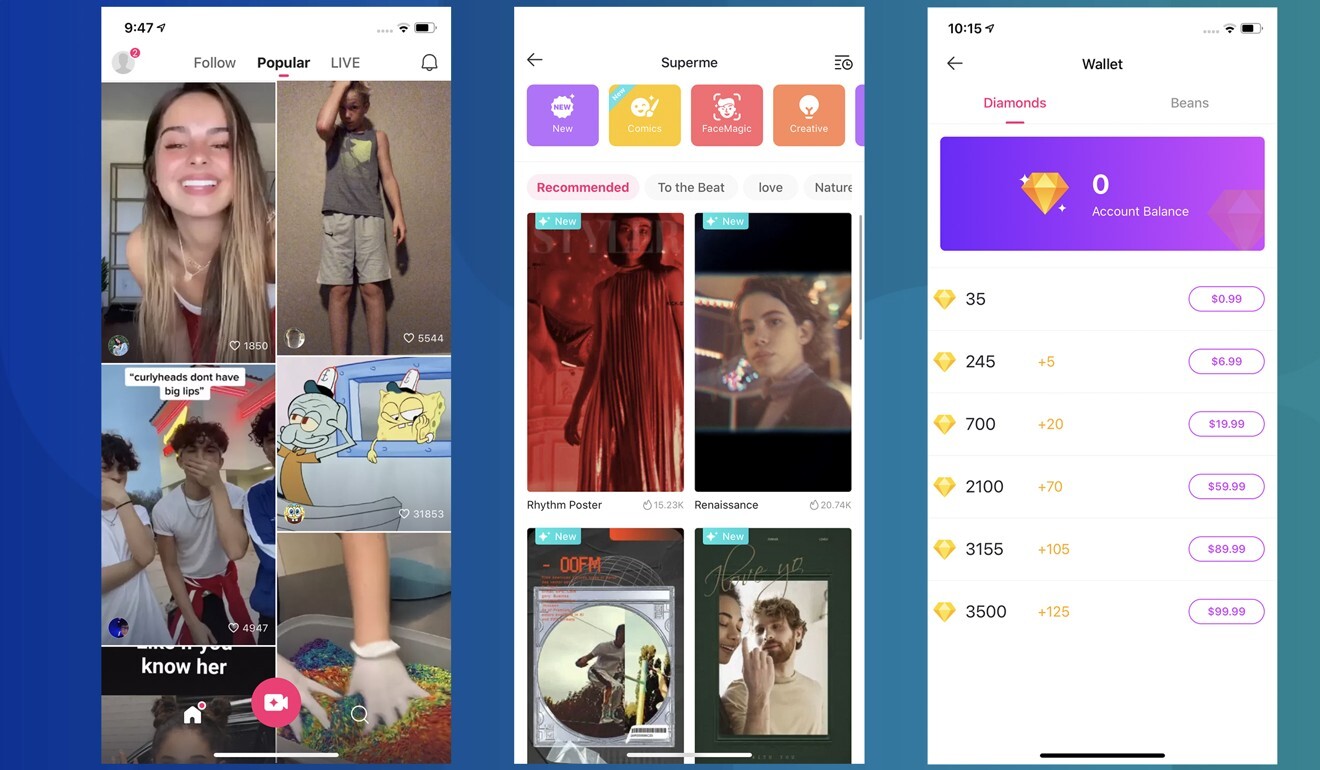
Likee also has a much wider range of editing tools than its rivals. Like many Chinese short video apps, the app automatically “beautifies” users by whitening skin tones, slimming the face and enlarging the eyes. If you want to look less like an alien, you’ll have to manually adjust these features back to normal.
The app offers numerous stickers, effects and filters that can be applied either while you’re shooting a video or to uploaded videos. Likee’s music feature is limited, though. It doesn’t automatically pick highlights like TikTok, so you have to manually trim your videos. And like Byte, Likee also won’t automatically match your clips to the beat of the music.
But Likee does offer a unique deepfake feature called FaceMagic, which resembles Zao, a face-swapping app that went viral in China last year. Just upload a photo of yourself and the app will superimpose your face onto someone else in a video clip. The feature works smoothly and takes just about five seconds.
The app also lets users live stream, currently a popular feature in Chinese short video apps. As with many Chinese apps, Likee lets users tip live streamers and takes a cut of the proceeds.
Clash
This is a no-frills app – for now.
Clash is another short video app with ties to Vine. App co-founder Brendon McNerney is a former Vine creator who reportedly launched Clash to help creators monetise their content.
Among all the top TikTok competitors, Clash is probably the simplest. The app lets you create videos up to 21 seconds long – and that’s about it. There are no filters, effects or stickers, and there’s no music to add to your videos.
The lack of features can be attributed to the fact that Clash is still in beta. But the company has reportedly said it will prioritise new features based on what its creator community wants.
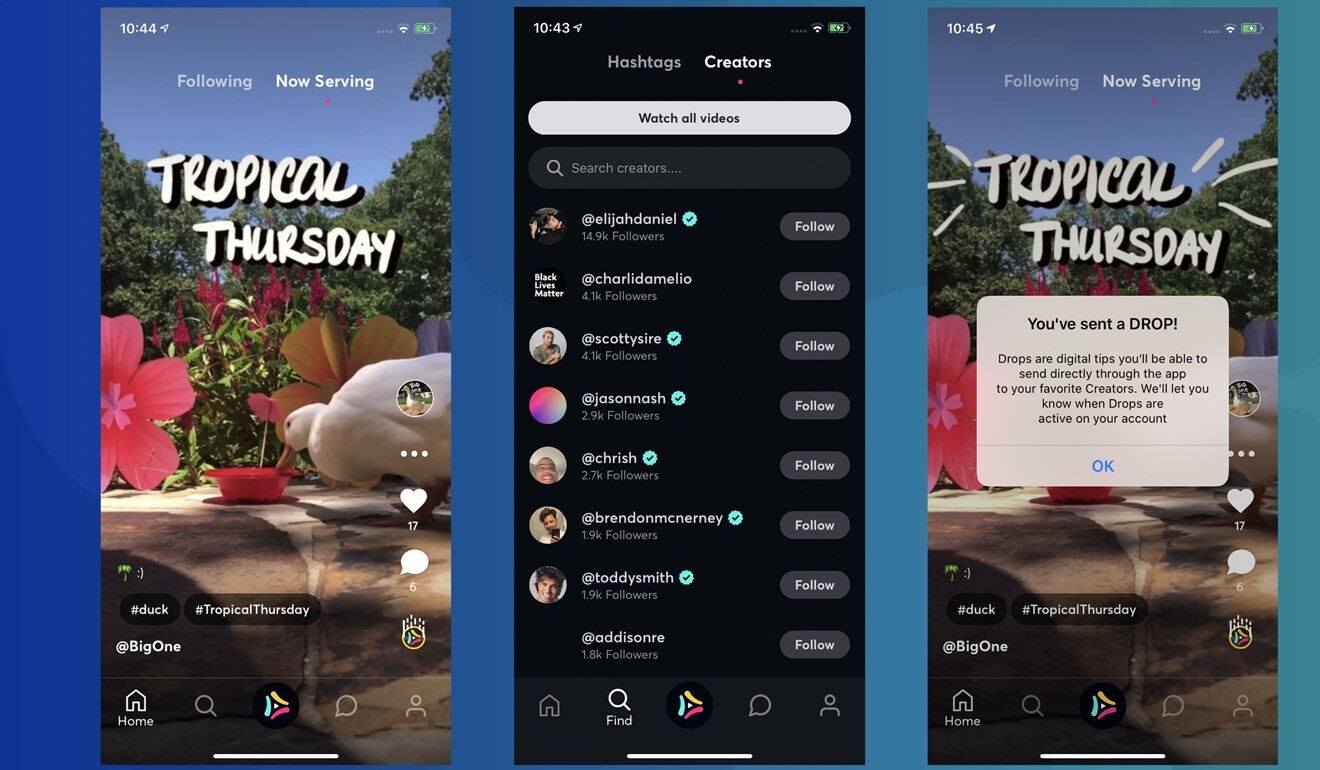
For monetisation, Clash is working on its own tipping feature called Drop, similar to Likee and other Chinese apps. But the feature isn’t live yet.
Dubsmash
Dubsmash is actually one of the first apps that tried to popularise lip-synching music videos. Like Musical.ly, it launched in 2014. But its competitor was later bought by ByteDance and merged into TikTok. Now Dubsmash is getting a new lease on life thanks to TikTok’s turmoil. It’s been downloaded about 2 million times in the last six months, according to Apptopia – more than Byte but much less than Triller.
Like its many competitors, Dubsmash relies on a feed of vertical videos organised around hashtags on the discovery tab. It also has some stickers and filters ready for users to deploy and lets you add text to your videos or draw over them. But this app is also missing more advanced features like automatically rearranging clips to match the music.
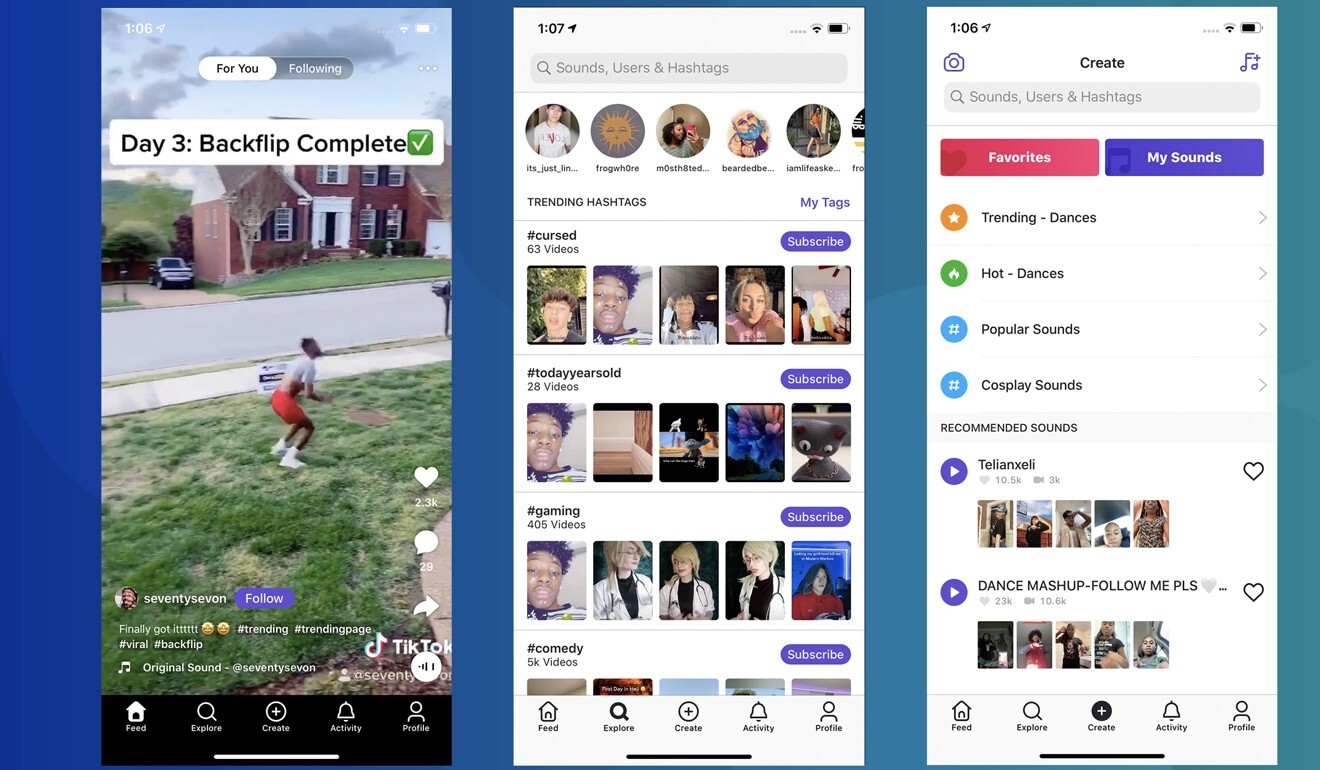
So has the time finally come for Dubsmash to smash the competition? Maybe not. It’s still lagging behind in downloads compared with some rivals, but it has been approached by potential buyers. The Information reported that both Facebook and Snap held talks about acquiring the company, but the talks are no longer active.
While all the apps here have something to like, they also highlight the difficulty of replicating the TikTok experience. That’s thanks to ByteDance’s powerful recommendation system that never stops learning about what users most want to see. But what’s most telling about the challenge these apps face is visible right on the videos themselves: many of them feature a TikTok watermark as evidence of where they originated.